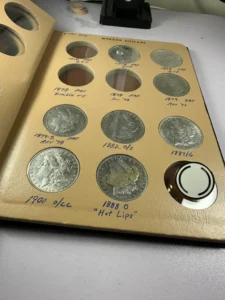Have you ever looked at your life and wondered why certain emotional patterns, struggles, or relationship dynamics keep repeating, no matter how hard you try to change? You’re not alone. Many of us come to a point in life where we realize that healing isn’t just about ourselves. It’s about healing family lineage and breaking free from the invisible threads that connect us to past generations.
Healing family lineage means acknowledging the emotional, spiritual, and psychological wounds that have been passed down, often unconsciously, through our family line. From unresolved trauma to inherited beliefs and behaviors, these “generational cycles” can quietly shape our choices, fears, and relationships. But the beautiful truth is this: you have the power to interrupt those cycles and create a new legacy, starting with you.
In this guide, we’ll explore five heartfelt and practical steps for healing your family lineage, along with supportive tools like prayer, ancestry exploration, and soul work. These insights are designed to meet you with compassion and clarity.
What Does Healing Family Lineage Mean?
Healing your family lineage means actively addressing and releasing the emotional wounds, limiting beliefs, and unhealthy patterns passed down from your ancestors. These patterns may show up as:
Constant anxiety or fear, even when things seem “fine”
Repeating unhealthy relationships
Money issues or a scarcity mindset
Addiction, abuse, or silence around trauma
A sense of shame or unworthiness that doesn’t feel like it started with you
If this resonates, you’re likely experiencing the effects of what’s sometimes called intergenerational trauma or ancestral pain. Some call it healing the family root or healing the family line. The intention is the same: break the cycles, honor the past, and move forward in love.
Step 1: Awareness
Recognize the Patterns
Before healing can begin, awareness is key. Ask yourself:
What issues seem to “run in the family”?
What emotional habits or beliefs did you learn from your caregivers?
Are there recurring themes like silence, control, perfectionism, or fear?
Sometimes, people discover their starting point by asking: How do I find my family lineage? While this often refers to genealogy, it can also mean exploring emotional and behavioral ancestry.
Journaling Prompts:
What did I learn about love, success, or safety growing up?
What pain in my parents’ or grandparents’ stories still lives in me?
What am I afraid to feel or say?
When you bring compassion to your own story, the healing begins.
Step 2: Use Prayer and Intention
Invite Healing
For many, healing your family lineage prayer is a powerful spiritual tool. Whether you pray from a religious, spiritual, or personal perspective, setting an intention to heal the wounds of the past invites grace into your journey.
Sample Healing Family Lineage Prayer:
“I honor the lives and struggles of my ancestors. I release what no longer serves me, and I invite peace, freedom, and love to flow through my lineage past, present, and future. I forgive and I am forgiven. I am free to live my truth.”
You can speak this aloud, write it in a journal, or adapt it to your faith tradition. Prayers like this are not about blaming, but about creating space for emotional release and divine support.
Step 3: Learn About Your Family Tree
Connect With Ancestral Understanding
If you’ve ever asked How do I find my family lineage?, you’re already tuned into the next step.
Learning about your ancestors can help contextualize why certain patterns exist. It can also bring compassion to family members who may have passed on pain unconsciously.
Ways to Explore Your Family Lineage:
Talk to older relatives: Ask about stories, secrets, and life challenges
Create a genogram (a visual family tree with emotional dynamics)
Use genealogy websites like Ancestry.com or MyHeritage
Research your cultural or ethnic history for context
Understanding their traumas can help you humanize your ancestors and choose what you no longer want to carry.
Step 4: Feel to Heal
Process and Release the Pain
Once patterns are recognized and stories uncovered, the emotional work begins. This is often the most challenging part of healing the family line, but also the most powerful.
You may feel:
Grief over what you didn’t receive as a child
Anger or resentment toward family members
Guilt for setting boundaries or creating distance
Emotional “heaviness” as old pain rises
These feelings are valid. They are part of healing your family lineage. The goal is not to stay stuck in blame but to move toward freedom.
Supportive Tools:
Therapy: Especially inner child, trauma-informed, or family systems work
Breathwork: Helps release stored emotions from the body
Somatic practices: Dance, movement, or gentle yoga
Energy healing: Reiki, ancestral clearing, or family constellations
Remember, you’re not just healing for yourself. You’re breaking the cycle for those who come after you.
Step 5: Rewire and Rewrite the Story
Create a New Pattern
The final step in healing family lineage is creating a new pattern—one of love, safety, and authenticity. This is where transformation truly takes root.
How to Rewrite the Narrative:
Choose new beliefs: “I am safe to speak my truth.” “I am worthy of love and rest.”
Practice self-parenting: Give yourself the support you didn’t receive
Create new traditions: Celebrate milestones, express gratitude, speak openly
Surround yourself with healing environments: Friends, communities, therapists
Breaking generational cycles doesn’t mean your family was bad. It means you’re brave enough to be the turning point.
Maya’s Journey to Healing
Maya, a 38-year-old mother of two, realized she was constantly afraid of “messing up” her kids. Therapy revealed that her mother was emotionally distant and critical, mirroring her grandmother’s coldness. Maya had internalized this and began repeating the same harsh tone with her children.
Through journaling and a simple healing of your family lineage prayer, she began noticing her triggers. She spoke to her mom about her childhood and discovered her grandmother had survived wartime trauma and loss. Suddenly, her family’s emotional shut-down made sense.
Maya chose to break the cycle. She began a weekly gratitude ritual with her kids, replaced criticism with encouragement, and joined a support group. Within a year, her home felt softer, safer, and more connected.
Signs That You’re Healing the Family Line
How do you know your work is “working”? While healing isn’t always linear, here are some beautiful signs:
You respond with curiosity, not just reaction
You feel compassion for yourself and others
You set healthier boundaries with loved ones
You no longer carry guilt for choosing peace
You begin to feel free emotionally and spiritually
This is the power of healing the family root—not just surviving, but thriving.
FAQ
What does healing family lineage mean?
It means addressing and releasing inherited emotional patterns, trauma, and limiting beliefs passed down from previous generations.
How can I start healing my family lineage?
Begin by recognizing recurring patterns, learning your family history, using prayer or intention, seeking emotional support, and rewriting your narrative.
Is there a healing for your family lineage I can use?
Yes. A simple one is: “I release what no longer serves me and welcome healing through my family line, past, present, and future.”
How do I find my family lineage?
Use genealogy tools, interview older relatives, create emotional family trees, or research your cultural background.
What is the healing of families in a spiritual context?
It refers to restoring peace, love, and connection through prayer, forgiveness, and releasing generational pain through divine or ancestral guidance.
Final Thoughts
Healing your family lineage isn’t easy, but it’s sacred work. If you’ve ever felt like the “odd one out” in your family, or the one who feels the weight of everyone else’s pain, maybe it’s because you were born to heal it.
Every journal entry, every tear, every act of forgiveness creates a ripple. You’re not just healing yourself. You’re reaching back to soothe your ancestors and reaching forward to bless your descendants.
You are the turning point. You are the new beginning. And your healing matters more than you know.






